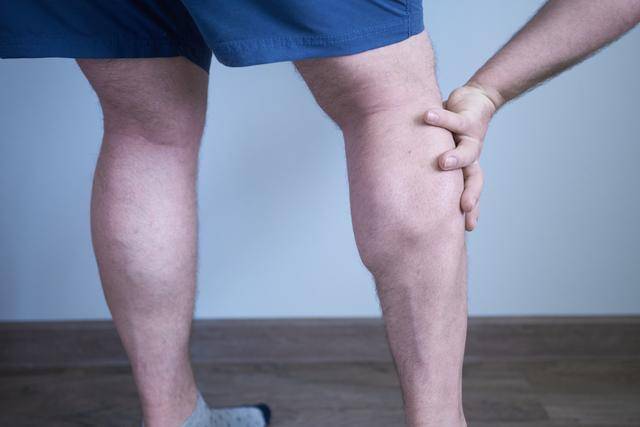Traditional Chinese wisdom says: “Aging starts with the legs first,” vividly illustrating the indispensable role of leg health in quality of life. Within leg health, the role of the knees is particularly crucial. The knees act as pivot points for our walking, running, and jumping, and their health directly influences our daily activities. However, many people have experienced moments in their daily lives when their knees suddenly feel “soft,” like dropping a stone into a calm lake, disrupting the peace.
Behind the Feeling of “Soft” Knees
1. Structure and Function of the Knees
The knee, one of the most complex joints in the human body, bears the responsibility of our daily activities. Like a palace’s central point, the knee is made up of the femur, tibia, and patella, not only supporting the body’s weight but also providing solid support for movement. These three bones connect cleverly through a series of intricate mechanical constructions to form a flexible and stable joint structure. Just like ancient stone arch bridges enduring centuries of storms, remaining steadfast over rivers, the knee joint supports our bodies through its unique design, allowing us to walk, run, and jump.
Just as a stone arch bridge requires regular maintenance to ensure its structural integrity and long-term functionality, our knee joints also require our care and protection. In daily activities, the knees not only bear the body’s weight but also absorb and release impact during movement. Prolonged usage or improper exercise methods can lead to knee joint injuries. Therefore, a profound understanding of the knee’s structure and function is crucial for maintaining its health.
2. Potential Reasons for Knees Feeling “Soft”
When the knees suddenly feel “soft,” this seemingly common occurrence may actually be the result of various factors working together. Firstly, muscle fatigue is a common reason. The leg muscles may experience fatigue after prolonged or high-intensity exercise, leading to inadequate muscle support for the knee joints and causing the knees to suddenly feel “soft.” It’s like a horse running for a long time; when tired, it may struggle to maintain a stable gait.
Feeling a “soft” knee, sometimes like swaying grass, may be due to a decrease in synovial fluid, similar to flowing spring water – light and soft. Synovial fluid is a viscous liquid that lubricates the joints, easing pressure and ensuring smooth and comfortable movements, similar to fresh spring water nourishing the joints. A reduction in synovial fluid increases joint friction, resulting in an unstable feeling during knee movement. It’s akin to a carriage; without proper wheel lubrication, it may cause bumps and squeaks during travel.
Finally, cartilage wear is also a significant factor not to be overlooked. Cartilage, smooth as jade, covers bone surfaces, reducing friction between bones like delicate feathers, guarding bone peace and harmony. The traces of time or frequent use gradually wear down the cartilage, weakening the knee joint’s stability, akin to tree rings witnessing the passage of time. It’s like the stones on a stone arch bridge that may gradually erode over time, affecting the bridge’s stability.
Story One: Mr. Wang’s Knees
Mr. Wang, a retired teacher who loves strolling in nature and practicing Tai Chi, recently noticed that his knees occasionally felt “weak” during walks, almost causing him to stumble. After a medical examination, the doctor explained that this was due to insufficient rest after prolonged exercise, resulting in knee joint cartilage wear.
Mr. Wang’s story reminds us that moderate exercise is essential, but attention to rest and recovery is also crucial.
Story Two: Unexpected for Xiao Li
Xiao Li, a young basketball enthusiast, suddenly felt his knee go “soft” during a game, falling to the ground. After an examination, it was discovered that his lack of warm-up exercises led to a knee joint sprain.
Xiao Li’s experience reminds us that regardless of the sport, warming up is indispensable; it effectively reduces sports injuries.
Remedies
1. Strengthen Leg Muscle Exercises
Strong leg muscles act as sturdy pillars, effectively supporting the knees, reducing joint burden like a solid defense line safeguarding bodily stability and health. Just as a robust bridge requires sturdy pillars, exercising leg muscles is crucial for knee health.
2. Maintain an Appropriate Weight
Excess weight increases knee burden and accelerates joint wear. Maintaining an appropriate weight is like removing cargo from a carriage, making it easier on the knees.
3. Avoid Over-Exertion and Prolonged Standing
Prolonged standing and excessive exercise can lead to knee fatigue, increasing the risk of the knees feeling “soft.” Properly scheduling exercise and rest time, like setting a reasonable journey for the carriage, can prevent unnecessary injuries.
4. Timely Treat Joint Diseases
If experiencing knee pain, swelling, or other symptoms, seek medical attention promptly to prevent worsening conditions. Timely treatment of joint diseases, like repairing cracks in a bridge, can prevent minor issues from becoming major problems.
While the sudden feeling of “soft” knees may seem minor, it may hide underlying health risks. Through the stories and strategies above, we see that maintaining knee health starts with small steps in our daily lives, akin to caring for and inspecting a bridge attentively. Let’s start today, focusing on knee health and enjoying a healthy and happy life.
I am Doctor He. Welcome everyone to like and follow. Share your opinions in the comments section, let’s chat!


